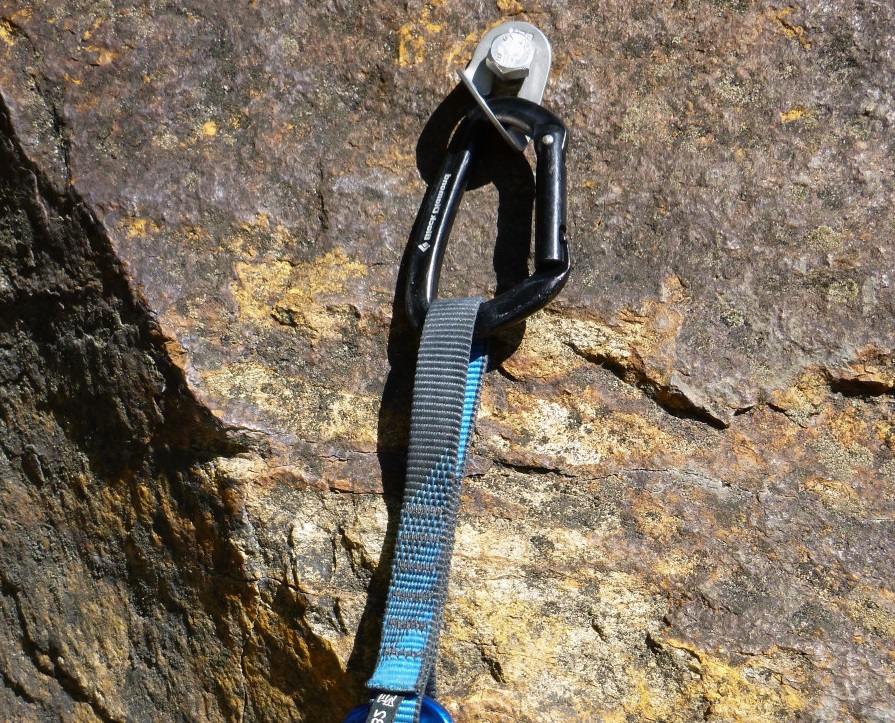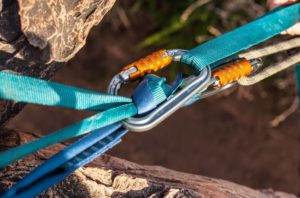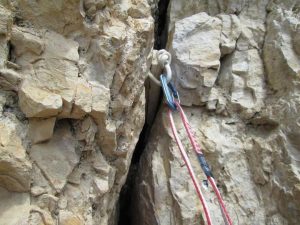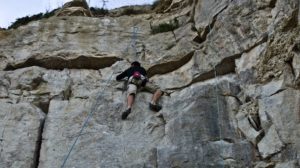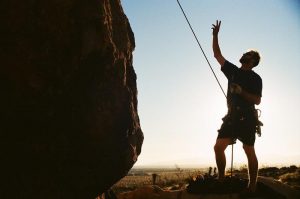Fixed protection and anchors, semi-permanent bolts and pitons that are already in place, are found on almost every climbing route. Sport climbing routes are protected by preplaced bolts that were hammered into holes drilled in the rock by the first ascent party, while other traditional-style routes have bolts and pitons that were placed by either the first ascent party or by subsequent climbers.
Never Trust Fixed Gear!
When you are climbing, it’s a good idea to always follow this simple rule: Never trust fixed gear. Unless you know the history of the fixed gear, meaning that you placed it yourself or witnessed another climber placing it, you know nothing about it. Every piton and bolt you encounter on a route should be treated with suspicion and used prudently since fixed anchors can fail, causing serious injury or death to a climber.
Bolts Give False Sense of Security
The boom in sport climbing, with routes primarily protected by fixed bolt anchors since the mid-1980s, has led to a general complacency and a false sense of security, especially among new and inexperienced climbers. Many climbers going to popular sport climbing areas like Shelf Road in Colorado, the New River Gorge in West Virginia, and Smith Rock in Oregon figure that the bolts must be fine since lots of climbers go there and clip into them. That, however, is an illusion since bolts can break, may be improperly placed, can be placed in bad rock, or may have hidden weaknesses like rust, especially in wet environments and seaside climbing areas.
Bolts are Metal Shafts of Different Sizes and Shapes
Bolts are simply pieces of metal of various alloys, sizes, and shapes that are either hammered or glued into a predrilled hole in a rock surface; a bolt hanger, simply a piece of metal with a hole large enough to attach a carabiner and another hole that fits over the bolt shaft, is attached to the bolt itself, allowing a climber to clip himself into it for safety.
3 Main Bolt Types Used for Climbing
Several types of bolts are used for rock climbing protection-wedge bolts, sleeve bolts, and eyebolts. Wedge and sleeve bolts, mechanical bolts that are usually used in building construction, rely on friction between the bolt shaft and the rock sidewalls of a hole to hold the bolt in place when it is tightened. An expanding cone inside the bolt helps wedge the shaft in the hole. Eyebolts, simply a metal shaft with an eye for clipping a carabiner, are placed in a drilled hole filled with industrial-strength epoxy, which bonds the metal to the rock surface. Some eyebolts are specifically made for climbing purposes, while others are used for construction. Forged and stainless steel eyebolts are stronger than cheaper cast eyebolts.
2 Types of Bolt Strengths
Bolts have two types of strengths-pullout strength and shear strength. Pullout strength refers to the amount of force that is required to pull the bolt out of the hole. The pullout strength on most bolts used for climbing is usually very strong. A bolt that is at least three- or four-inches long almost never pulls out under a load, especially if the load is perpendicular to the bolt shaft. Climbers are more concerned with the shear strength of a bolt, which refers to the strength of the shaft itself. Logically, thicker bolt shafts have higher shear strength than thinner shafts. Climbers that place bolts try to use the thickest bolt whenever possible.
Thicker Bolts are Stronger than Thin Bolts
Most bolts used for climbing anchors have either a 3/8-inch or ½-inch-thick shaft, rather than a ¼-inch or 5/16-inch shaft, which are considerably weaker. Old bolts used on climbing routes, usually bolts placed in the 1960s and 1970s in holes drilled by hand, are ¼-inch in diameter. Accidents and fatalities have occurred when these old bolts, usually rusted and weak, break or are sheared off by the extreme forces generated by a fall. Bolts are strongest when they are loaded by a fall or other weight load that is perpendicular or at a 90-degree angle to their shaft.

